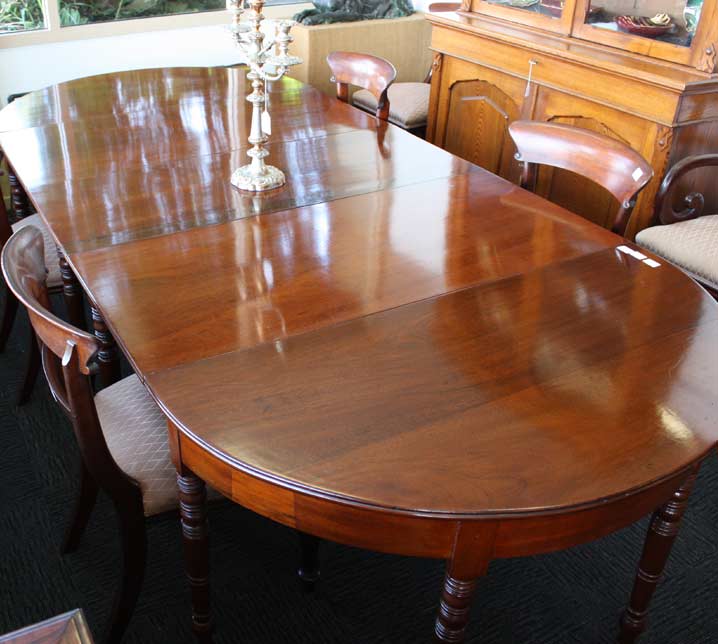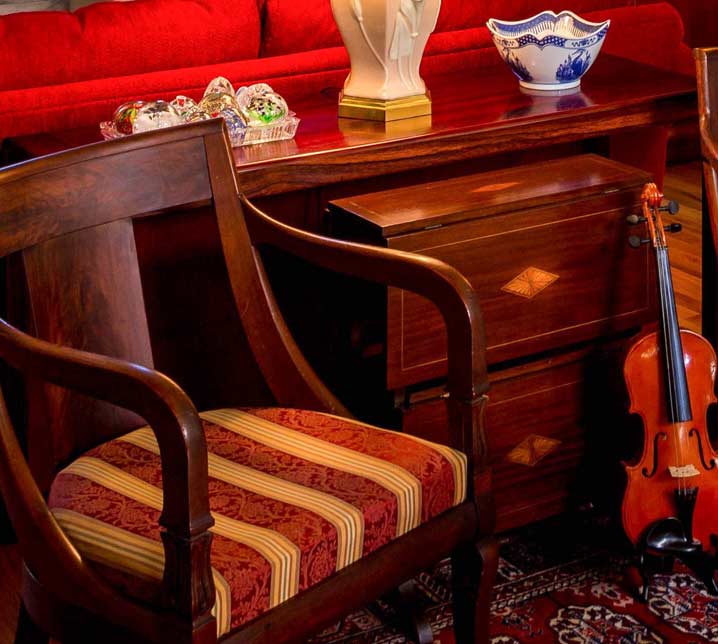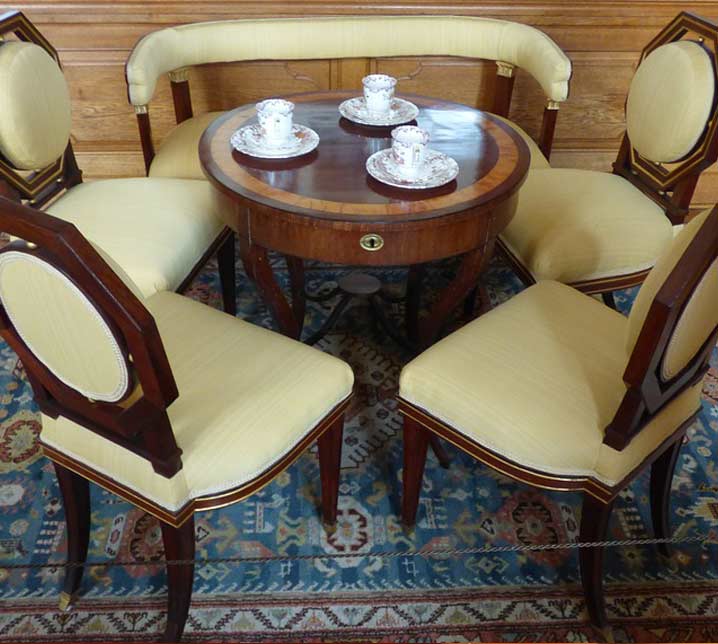
French Polishing
There are many ways of finishing pieces of antique furniture. Choice is partly a matter of selection in accordance with the characteristics of the piece concerned, and partly a case of personal preference . Choice is of course also governed by the workman's own skill and the facilities available.
It is worthwhile to note an opinion given by the highly respected Charles H. Hayward. An early 20th Century cabinet maker and polisher, he served a valuable apprenticeship under the tutelage of late 19th Century master craftsmen. For Hayward, an indifferent finish can turn an impeccable piece of craftsmanship into a second rate job. While wood finishing is an essential accomplishment for every craftsman, it can only be achieved, like many skills, with the use of correct techniques applied in right sequence, together with the correct materials and technical know-how.



French Polishing is the process by which very thin layers of shellac are applied to the surface of wood in order to fill the grain of the timber and thus produce a lustrous sheen. ( shell- lac is the resin produced from the female lac beetle).
There are various methods used to apply shellac. For Classic Antique Restoration, the preference lies solely in hand work; the main reason being that the gradual build-up of the polish is easier to control and allows time for it to sink into the grain, without necessarily overfilling it. This is time consuming, but the end result is far more desirable. A quick, heavy application of the polish with a brush or spray- gun can result in a lumpy " toffee apple " appearance.
Some timbers require much less shellac in order to produce an acceptable sheen. (eg. Ebony, Cuban mahogany, burr walnut ) while others more open grained will absorb more. (eg. Oak, walnut, mahogany)
The existing polish on an old surface, markedly worn through wear and tear, may still retain whatever was used to fill the grain when originally polished, 180 years ago. Such a surface may require careful preservation and less shellac to achieve a lustrous finish.
The key to the whole process is to assess carefully what is required and to judge each piece according to its merits.





